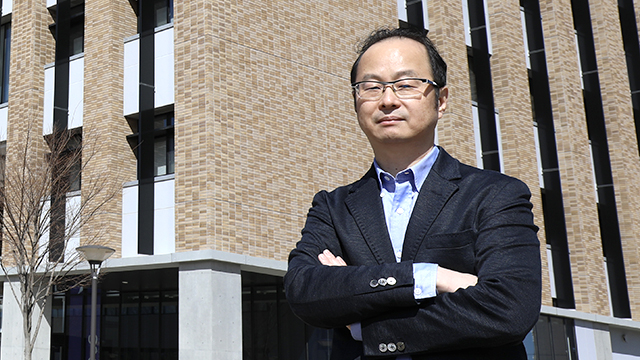ASOURCE®TIMES

東北大学災害科学国際研究所
准教授
佐々木 宏之
2011年高萩協同病院勤務時に東日本大震災を経験。受援の難しさを痛感し、自身の経験を伝えるため、また科学的に調査するため、2012年に東北大学病院災害科学国際研究所に所属。2016年から東北大学病院BCP委員会事務局メンバーとして東北大学病院の事業継続計画の策定や事業継続マネジメント活動に中心的に携わっている。
東日本大震災から10年。現在でもその余震が続き、加えて台風や洪水も毎年のように日本各地を襲っている。災害拠点病院は自ら被災しても医療の継続的な提供と地域への医療支援が求められる。そのための事業継続計画(BCP)の策定と運用のポイントについて、東北大学災害科学国際研究所の准教授を務める佐々木宏之氏に話を聞いた。
東北大学病院は、1995年の阪神・淡路大震災をきっかけに整備された災害拠点病院の一つで、拠点病院としての活動を維持するための災害対策マニュアルも常にアップデートしてきました。当院では、2017年に防災・業務継続計画(病院BCP)第1版を取りまとめ、2019年に第2版へと改訂しました。当初から「書類としてのBCP策定をゴールにすること」に意味はないと考えていました。病院が災害に巻き込まれたときに機能をどう維持するか、事業継続マネジメント(BCM:Business Continuity Management)を継続的に行い事業継続の考え方を病院内に浸透させることが重要であり、平時からの病院BCPの点検、改善や教育訓練の実施を盛り込みました。
大規模災害発生時の東北大学病院の基本方針は、患者・教職員の安全確保、当該災害への保健医療対応、地域社会の支援です。災害対策マニュアルに沿って災害対策本部を設置し、迅速に病院内の被害状況を把握して、災害レベルを決定します。当院では、災害レベルを1~4に分類し、レベルに応じて、傷病者受け入れ準備や院内の災害復旧を進めて院内の態勢を整えるとともに、災害拠点病院として被災地支援を開始します。
一方、災害時には、人的物的被害が発生しますが、このような状況下でも優先して実施すべき業務を「重要業務」とし、各部門の重要業務とその開始すべき目標時間を決めています。例えば、病院の被害が軽微と判断すれば、1時間以内に多数の傷病者の受け入れ態勢を取ったり、12時間以内に職員と入院患者さんの生活支援を始めます。
BCPが書式として存在するだけでは何の実効性も持ちません。災害が発生した際に病院が機能を本当に維持するためには、平時から事前対策や教育・訓練の実施、点検と改善、予算や医療資源の確保などを継続的に行なうBCMが重要であり、BCPはその具体的な手続きを記載した文書に過ぎません。そのためには、BCPを常に見直すことのできる体制をつくる必要があります。当院では、副病院長がBCP委員会の委員長を務め、月1回の委員会で前年度の課題解決の進捗管理、予算確保などの体制作りと見直しをしています。
とはいえ、現在のBCPにはまだまだ課題があります。主に大地震の発生を前提としたBCPは、近年繰り返し起きている台風や洪水などの水害は想定外です。一方、新型コロナウイルス感染症の拡大によって、一時はマスクやガウンなどの調達が滞りましたが、これによりサプライチェーンの見直しにつながるなど、BCPの新たな課題への気付きにつながりました。
BCPは策定してそのファイルを書棚にしまうものではなく、訓練や日常診療などを通じて、常に見直してはじめて災害時の事業継続に有用な計画書として機能するのです。